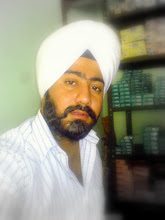JALLIANWALLA BAGH MASSACRE
At 4:30 p.m. on April 13, 1919, Brigadier General Reginald Dyer opened fire on an unarmed gathering in Jallianwala Bagh. 1,650 rounds were fired into the complex, with the narrow only exit blocked by the troops. Close to 2000 people died either directly hit by bullets or by jumping into the well to escape from the bullets. Most of those that died were not freedom fighters but rather villagers that had arrived in Amritsar for the Indian festival Baisakhi and had gathered in the park.
India was at a crossroads. World War 1 had ended and the spirit of freedom was abundant.Riots were increasing across the country. On April 10, two Punjab Congress leaders, Dr.Saifuddin Kitchlew and Dr. Satyapal, were deported to the Kangra Valley. The day before Gandhiji had been arrested. On the Morning on April 13th, Brigadier General Dyer's troops marched through the city and declared that no congregation can happen in Amritsar. In the evening, over 20000 Indians gathered in Jallianwala Bagh, some to visit the park and others to listen to a set of speeches condemning the Rowlatt Act. When the troops arrived they gave way no warning, they made no attempt to quietly disperse the crowd. They blindly shot.
Dyer, who had his orders from General Dwyer, did not regret his act and was soon relieved from his duty after an investigative commission found the shooting to be unjust. However Colonial India forgave him and he retired in comfort. General Dwyer however, was hunted down by Udham Singh in England and shot. Though very late, he paid the just price for the massacre at Jallianwala Bagh. To millions of Indians, this place will always be a blood stain on India's struggle for freedom.

No comments:
Post a Comment